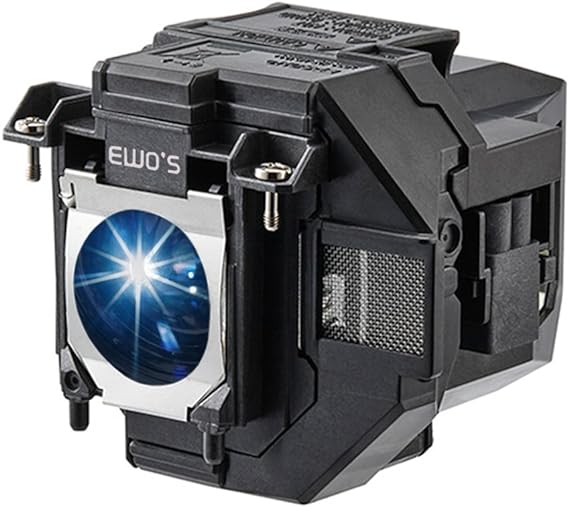[Projector Bulbs] Comprehensive List of Projector Bulb Types and an Introduction to Their Characteristics
Projector Bulb Classification – According to Place of Origin
The first type is the original light bulb introduced by the projector manufacturer. Its obvious sign is the packaging with the manufacturer’s logo and the special lamp holder, known as the “original package.”
Characteristics: Strict testing ensures quality and service life, absolutely guaranteeing product quality. It can generally reach the average usage time claimed by the projector manufacturer. Users are advised to prioritize this type of bulb. However, due to multiple channels and profit layers, the selling price is generally high, and the supply is limited, making it challenging to purchase.
The second category comprises bulbs produced by projection bulb manufacturers that enter the market through various channels, such as PHILIPS, OSRAM, etc.
Features: Some labeled “original bulbs” may be defective products from manufacturers or test bulbs from projector manufacturers. Identifying them externally is difficult, and their lifespan is relatively short. Buyers must exercise caution to avoid deception.
The third category consists of Taiwanese bulbs produced by manufacturers like Guoqiao.
Characteristics: They can replace UHP, VIPR, and other light bulbs but have a significantly shorter service life than the original light bulb, generally around 500 hours. While the individual bulb price is low, the average usage cost is high, approximately 3 yuan/hour, which is 1-2 yuan more than the original bulb. Due to the short lifespan, rapid brightness decay, and frequent replacement, users are advised to purchase such bulbs cautiously.
The fourth category includes domestic bulbs, with major manufacturers being Wuhan China Optics Valley Huameng Optoelectronics, Dandong Xinya, and Nanhai Xuelite (formerly Nanhai Huaxing) capable of producing lamps that replace UHP.
Characteristics: The bulb’s lifespan is not long, similar to Taiwan bulbs, making them prone to unknown failures during use, with a high rate of lamp explosion. Unfortunately, domestic light bulbs are often sold by unscrupulous businessmen as original UHP light bulbs.
The fifth category encompasses retrofit light bulbs, such as changing VIP to UHP light bulbs, HSCR to UHP light bulbs, UMPRD to NSH light bulbs, etc.
The sixth category includes used bulbs or counterfeit bulbs, such as wick bulbs from unscrupulous merchants and projector bulbs imitated in Japan, Taiwan, and domestic coastal areas.
Characteristics: Rough workmanship, short lifespan, poor compatibility, and the possibility of unknown failures during use. Unscrupulous merchants often install wick bulbs with wicks removed from old bulbs or domestic wicks mounted on lamp cups for sale. Most Sony, Sharp, EPSON, BenQ, etc., bulbs have wicks. Users are strongly recommended to exercise careful judgment when making purchases.
Projector Bulb Classification – According to Material
According to different materials, camera bulbs can be divided into metal halide bulbs, UHP bulbs, UHE bulbs, and LED bulbs.
Metal halide bulbs are inexpensive but have a short half-life, with brightness decreasing to half of the original after less than 1000 hours of use. They generate high heat, requiring a projector cooling system, making them unsuitable for long-term projection.
UHP bulbs (Ultra High Performance) belong to ultra-high-pressure mercury bulbs, offering a long lifespan, generally nominal 6000 hours, with some even claiming 12000 hours. The brightness does not significantly decrease after 4000 hours of use. UHP bulbs are ideal cold light sources but are generally used in engineering projectors due to their high price.
UHE bulbs are also a cold light source, widely used in mid-range projectors. They have a moderate price, and brightness hardly fades before 4000 hours of use.
LED bulbs, also known as light-emitting diodes, have been used in displays and lighting for a long time. They have a long service life, are energy-efficient, and environmentally friendly. They are small, portable, feature-rich, and highly compatible with portable digital devices.

